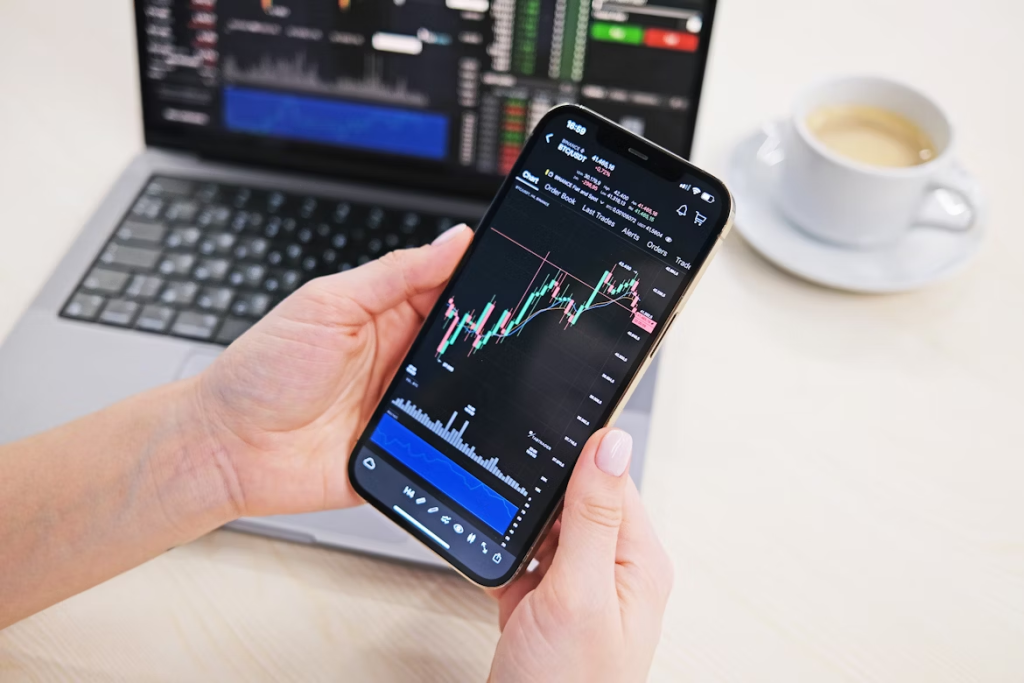Swing trading crypto assets has emerged as a compelling strategy for traders seeking to harness medium-term price movements while balancing exposure and risk.
Unlike day trading, which demands minute-by-minute attention, or long-term HODLing, swing trading occupies a strategic middle ground—holding positions for several days to weeks, capitalizing on defined market swings.

In volatile markets like cryptocurrencies—where rapid shifts are common—swing trading allows traders to ride short- to medium-term trends, capturing meaningful profits without succumbing to the emotional pressure of intraday volatility.
In this article, we delve into swing trading crypto assets with rich, research-based insights, real-world examples, and data-driven case studies. We explore core components like identifying entry and exit points, managing risk, and deploying technical indicators.
Along the way, we’ll highlight tools and platforms—like Orlunith Pulse 8.8—that enhance trading workflows and analysis. Whether you’re a novice exploring swing strategies or an experienced trader refining your approach, this guide aims to elevate your understanding of swing trading crypto markets.
What Is Swing Trading in Crypto?
Swing trading involves:
- Definition & Time Horizon: Entering and exiting trades over a few days to several weeks, aiming to capture shorter-term “swings” within broader trends.
- Market Suitability: Particularly effective in crypto, where asset prices often cycle between momentum and retracement phases.
- Philosophy: Rather than chasing intraday volatility or waiting for years to realize gains, swing traders look for repeatable opportunities—riding both upswings and correcting dips.
Example: A trader buys Ethereum at $1,800 and sells at $2,100 ten days later when momentum fades—a classic swing trade.
Key Elements of Swing Trading Crypto Assets
Technical Analysis Tools
Swing traders rely on technical tools to pinpoint entry and exit points:
- Relative Strength Index (RSI): Gauges overbought/oversold conditions.
- Moving Averages (e.g., 20-day, 50-day EMA): Identify trend direction and potential reversals.
- MACD (Moving Average Convergence Divergence): Signals momentum shifts.
- Support & Resistance Zones: Key price levels where reversals or breakouts often occur.
Example: Bitcoin dips to a long-term support zone at $28,000 while RSI nears 30 (oversold), prompting a swing trader to enter a long position; they exit near $32,000 as RSI approaches overbought territory.
Risk Management Techniques
Sound risk controls are critical:
- Position sizing: Risk only a small percentage (1–2%) of capital per trade.
- Stop-loss orders: Define maximum loss upfront—e.g., 5% below entry.
- Trailing stops: Lock in gains if price moves favorably.
- Diversification: Don’t overcommit to one token or trade simultaneously.
Strategy Execution Workflow
A practical swing trading workflow:
- Screen the crypto universe for assets with clear trends.
- Identify entry signals (e.g., RSI oversold, support bounce, breakout above moving average).
- Compute ideal stop-loss and target zones.
- Initiate the trade, monitor momentum and volume.
- Use trailing stops or predefined exit triggers.
- Review the trade’s performance and refine strategy.
Platforms and tools like Orlunith Pulse 8.8 enhance this process by offering integrated charting, signal alerts, and personalized dashboards tailored for swing traders—enabling swift, informed execution.
Case Study: Ethereum Swing Trades in 2024
- Context: In early 2024, Ethereum formed a pattern of retracements toward $1,600, followed by bounces toward $2,000.
- Example Swing Trade:
- Entry: $1,650, when RSI dipped below 35 and price touched a known support region.
- Exit: ~$1,950, near a 20-day EMA and price resistance with RSI approaching overbought levels.
- Outcome: ~18% gain in under two weeks.
- Lessons Learned:
- Combining RSI, support, and moving averages can enhance confidence in entry points.
- Volatility allowed clear targets—but also demanded disciplined stop placement to guard against sharp reversals.
Using tools like Orlunith Pulse 8.8 in such scenarios lets traders visually track momentum shifts and quickly adjust plans—streamlining both analysis and execution.

Pros and Cons of Swing Trading Crypto Assets
Pros:
Captures meaningful mid-term trends without constant monitoring.
Market can reverse sharply, leading to whipsaws and stop-outs.
Often requires less time than day trading.
May miss larger long-term gains from strong, sustained trends.
Keeps traders from emotional intraday decision-making.
Cons:
Fewer trading opportunities than day trading or scalping.
Strategy can be back-tested and systematized.
Requires technical analysis skills and quality tools.
Common Mistakes to Avoid
- Over-leveraging: Amplifies potential losses as well as gains.
- Ignoring volume: Low volume movements may be false breakouts—price can reverse quickly.
- Ignoring broader market context: Swing setups in isolation can fail during market-wide crashes.
- Chasing patterns: Entering late on reversals often results in entering just as price reverses.
Conclusion
Swing trading crypto assets offers a versatile and appealing strategy—straddling the middle ground between patient investing and frantic day trading.
Armed with technical indicators like RSI, moving averages, support/resistance zones, and sound risk controls, traders can harness medium-term momentum to achieve consistent returns.
Real-world cases, such as Ethereum’s trends in 2024, underscore how identifiable patterns can translate into profitable trades when applied with discipline.
Furthermore, leveraging tools like Orlunith Pulse 8.8 can elevate your trading game—providing dynamic charts, alerts, and performance tracking tailored for swing strategies. As crypto markets evolve, so must swing trading tactics; tools, analysis, and mindset combine to form the foundation of sustainable success.
By cultivating a structured approach, practicing patience, and continuously refining strategy, swing traders can navigate the volatile crypto landscape with greater control and profitability.
FAQs
What time-frames are optimal for swing trading crypto?
Swing traders typically use daily to 4-hour time-frames for charting, holding trades from several days to a few weeks to capture meaningful price swings.
How do I set stop-loss orders in swing trading?
Stops are often placed just below support zones or key moving averages—typically aiming to risk 1–2% of capital per trade to manage drawdowns.
Which indicators are most effective for swing trades?
Common tools include RSI for overbought/oversold conditions, MACD for momentum trends, moving averages for trends and dynamic support/resistance, and key horizontal price levels.
Can swing trading work in highly volatile markets?
Yes—volatility creates larger swing swings, but also increases risk. Traders must use tighter risk management and avoid overleveraging.
How much capital do I need to start swing trading?
You can begin with modest sums (e.g., $500–$1,000) but should ensure enough margin to absorb drawdowns and maintain position sizing discipline.
How should I choose which crypto assets to swing trade?
Select assets with sufficient liquidity, clear trend behavior, and decent trading volume. Established coins like BTC, ETH, and major altcoins often fit the criteria.
Does news impact swing trades?
Absolutely—regulatory announcements, network upgrades, macroeconomic shifts can abruptly reverse trends. Stay informed and ready to adjust.
Can I combine swing trading with tools like Orlunith Pulse 8.8?
Yes! Orlunith Pulse 8.8 provides live charting, signal alerts, and personalized OCO (one-cancels-other) orders to streamline execution—empowering swing traders with precision and efficiency.
Is swing trading better than HODLing?
It depends on your goals and temperament. Swing trading targets medium-term gains and requires active management; HODLing is passive and may capture long-term growth but misses shorter trend opportunities.
What’s the learning curve for swing trading crypto?
Moderate—understanding technical indicators and risk controls takes time, but with back-testing, demo trading, and disciplined journaling, many traders build competence within weeks to months.

